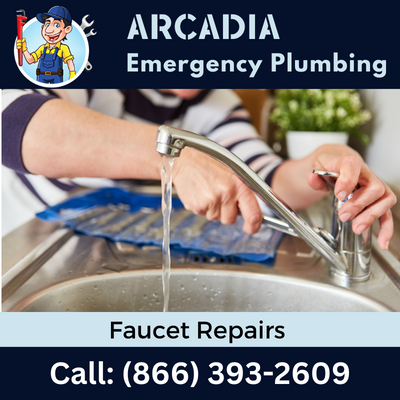Arcadias Guide to Understanding Pipe Replacement
Published at:8/16/2023 by in 'Emergency Plumbing' Category
Arcadia's Guide to Understanding Pipe Replacement
Replacing pipes in your home can be a daunting task, but with the right knowledge and guidance, it can be a smooth process. The first step is to identify whether pipe replacement is necessary. Signs of deteriorating pipes include frequent leaks, low water pressure, discolored water, or strange noises coming from the plumbing system. If you notice any of these signs, it's crucial to call a professional plumber who can assess the situation and determine if pipe replacement is needed.
Once you've confirmed that pipe replacement is required, there are several options to consider. One common method is traditional pipe replacement, which involves removing the old pipes and installing new ones. Another option is trenchless pipe replacement, which utilizes advanced technology to replace pipes without extensive digging or disruption to your property. It's essential to consult with a qualified plumber who can evaluate your specific needs and recommend the most suitable approach for your home. By understanding the signs of deteriorating pipes and exploring different replacement methods, you'll be well-prepared for any future plumbing issues that may arise.
Arcadia's Guide to Understanding Pipe Replacement
Replacing pipes in your home or business can be a daunting task, but with the right knowledge and guidance, it doesn't have to be. In this comprehensive guide, we will walk you through everything you need to know about pipe replacement, from signs that indicate it's time for a replacement to the different types of pipes available and the steps involved in the replacement process.
Signs That It's Time for Pipe Replacement
Over time, pipes deteriorate due to various factors such as age, corrosion, tree root intrusion, or damage caused by freezing temperatures. Here are some common signs that indicate it may be time for pipe replacement:
- Frequent leaks: If you notice recurring leaks throughout your plumbing system despite repairs, it may be an indication of deteriorating pipes.
- Rusty water: Discolored water coming out of your faucets could mean that your pipes are corroded and need replacing.
- Foul odors: Unpleasant smells emanating from drains or sewage backups can signify damaged sewer lines that require immediate attention.
- Persistent clogs: If you frequently experience stubborn clogs even after using drain cleaning methods, there might be underlying issues with your pipes.
Different Types of Pipes Used in Plumbing
Pipes used in plumbing systems come in various materials. Each type has its own set of advantages and disadvantages. Let's explore some commonly used pipe materials:
Copper Pipes
Copper is one of the most popular choices for plumbing due to its durability and resistance against corrosion. Its long lifespan makes copper pipes an excellent investment for both residential and commercial properties.
PVC Pipes
Polyvinyl chloride (PVC) pipes are widely used in drainage systems. They are lightweight, affordable, and resistant to chemicals, making them suitable for various applications.
PEX Pipes
Cross-linked polyethylene (PEX) pipes have gained popularity in recent years due to their flexibility and ease of installation. PEX pipes are highly resistant to freezing temperatures, making them ideal for cold climates.
The Pipe Replacement Process
Replacing pipes involves several steps that should be followed carefully to ensure a successful outcome. Here's a breakdown of the pipe replacement process:
1. Inspection and Assessment
A professional plumber will inspect your plumbing system using advanced tools such as cameras or leak detection equipment. This step helps identify the exact location and extent of pipe damage or deterioration.
2. Planning and Preparation
Based on the inspection results, a detailed plan is created for replacing the damaged pipes. The plumber will determine which type of pipe material is most suitable for your specific needs.
3. Pipe Removal
The next step involves removing the old or damaged pipes from your plumbing system carefully without causing further disruptions or damage to surrounding structures.